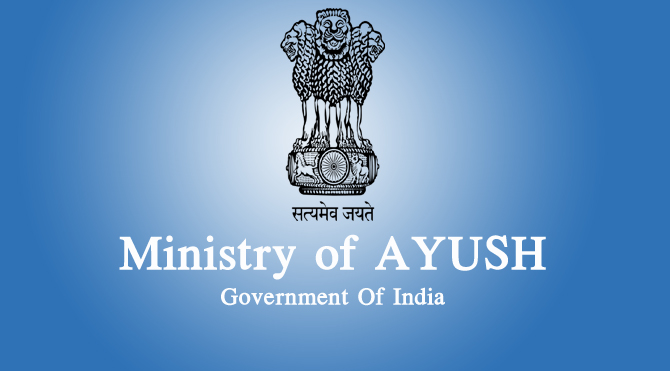
Says Joy Chakraborty, COO, P D Hinduja Hospital & Medical Research Centre, Mumbai as he sketches the delicate relationship among government, insurance providers, hospitals and patients
Making healthcare affordable and accessible to all is a mandate that many healthcare providers and stakeholders take but many actually work on ground realities and make them meaningful. There are multiple players who have an important role in making health insurance for all a reality in India. And, there is a need for balance in the relationships among insurance companies, government, agencies, as well as the private and public operators. Their efforts will help us make quality healthcare accessible and affordable.

Innovation is Dire Need
Insurance is a pre-payment mechanism where the insurer is covered for the risk for whatever they are likely to face in future. In the Indian scenario, most of the time the medical cover is offered by the government insurance schemes or private insurance companies. We also have social insurance in place, and in these we find that mostly Employees State Insurance Scheme (ESI) is a provider. In all these, there is still a gap in the promises made and quality of service delivered by health companies in India. It is somewhere in that perspective that it is seen as a high risk support, where the quality as well the cost contribution mechanism have a mismatch to the patients expectations.
Challenges
Market coverage is very less as of date in Maharashtra and has lot of issues and challenges. The role of the consumer or the patient is much needed to make these schemes successful. We try to keep ourselves away from a health agent and casual approach towards our health likelihood of illness. We should be proactive about our health. Market penetration is also low and more efforts are needed. This works well at the last mile where micro-insurance and community insurance is likely to work best from the experience of Karnataka state and should not be left to work in isolation and fragmented. The need of the hour is customized policies for the bottom of pyramid and the micro-insurance model will connect with the people and deliver according to their needs. Another important aspect that is missing is the health insurance preventive check up if it will be given as part of the insurance package; this will have a direct impact on the direct reduction of claim amounts that are made by patients. There is a need to manage these out-patient claims and manage the overall cost of the amount that is submitted for claims, however these privileges are not there as policy structures as available today.
Two myths that are there usually surrounding the realization of quality and affordability of healthcare in a developing country like India is, firstly, that quality healthcare is expensive and that it is usually believed to be affordable by only a select section of population.
Breaking Myths
Two myths that are there usually surrounding the realization of quality and affordability of healthcare in a developing country like India, is firstly, that quality healthcare is expensive and that it is usually believed to be affordable by only a select section of population. I would like to break that myth. There is always a way to follow a scientifically proved concept of productivity frontier that balances the operational effectiveness versus strategic positioning. This is proved scientifically and even research has been done to prove that there is an inverse relation between number of patients at a healthcare facility and cost of treatment. The increases in the number of patients have a direct impact on the cost, as the number of patients increase the cost of treatment drops. All we need to do is to follow our heart and there is no need even to compromise in ethical practice, you can give the best possible cure at best possible price. This makes it a win-win situation for both the patients and the hospitals.

Patient Wellness
Quality in healthcare is important to have documented patient outcomes. The outcome based claim settlement mechanism is a system that encourages pay for quality. This system has been adopted in the US. This leads to pay for quality mandate. The system is designed in such a way that insurance companies benefit when patient outcome is good, when your patient stay is less you get more, if the patient infection rate is high you get less money. The system has an inbuilt component to monitor patient satisfaction and on the basis of your performance score wherein you have to score more or better to get better re-imbursement. This system unfortunately is not practiced in India. If such innovative practices are brought to India, it will have direct impact on the quality and affordability of healthcare. These will help insurance providers have better market penetration and acceptance by hospitals and patients alike.
Best Practices
The adoption of best practices is imperative for healthcare sector in India to be more effective in patient care. India has high volume of patients ailing from chronic diseases. Thus introduction of disease management of chronic diseases is important need of the hour. Currently, we have there is no system where we can monitor or assist the patient in diagnostic check up for the patient for any diseases.
This one important information if delivered to the patient on time can surely help reduce the probability of hospitalization and increase in amount of claims. We are also looking at formats of home care and day care that have become popular wherein the period of hospitalization is short and patients returns home much faster. However, as this is not supported by many insurance companies it faces the issue of patients volume. It would be encouraging if the insurance companies pay attention to this trend and design policies and mechanism by which insurance companies can pay such day care centre admissions and treatments. Otherwise all this become hospital-based care that is more expensive.
Inclusive Healthcare
Access to quality is a privilege for few is another hypothesis and assumption. This has its basis on that less number of people can get access to better quality healthcare. This perception can be entirely changed if we follow the theory of numbers, wherein if we are able to get more number of people and reduce the cost and distribute the provisions centers or healthcare providers should be available in different locations which can make this quality healthcare accessible for many people. This will address the long standing concern of equitable distribution of healthcare. Our ultimate dream should be that those who are at the bottom of the pyramid, we need to address their needs and have better healthcare facilities accessible to them.
Be a part of Elets Collaborative Initiatives. Join Us for Upcoming Events and explore business opportunities. Like us on Facebook , connect with us on LinkedIn and follow us on Twitter , Instagram.












